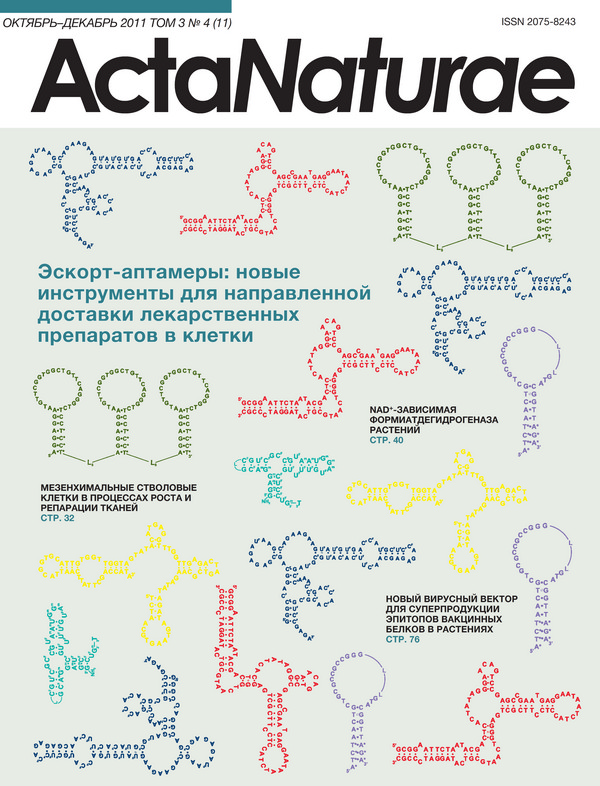Behavior of Transplanted Multipotent Cells after in Vitro Transplantation into the Damaged Retina
- Authors: Sergeev SA1, Khramova YV1, Semenova ML1, Saburina IN2, Kosheleva NV1,2
-
Affiliations:
- Lomonosov Moscow State University
- Institute of General Pathology and Pathophysiology, Russian Academy of Medical Sciences
- Issue: Vol 3, No 4 (2011)
- Pages: 66-72
- Section: Articles
- URL: https://actanaturae.ru/2075-8251/article/view/10657
- DOI: https://doi.org/10.32607/20758251-2011-3-4-66-72
- ID: 10657
Cite item
Abstract
Full Text
Behavior of Transplanted Multipotent Cells after in Vitro Transplantation into the Damaged RetinaAbout the authors
S A Sergeev
Lomonosov Moscow State University
Email: embryossa@gmail.com
Biology Faculty
Y V Khramova
Lomonosov Moscow State UniversityBiology Faculty
M L Semenova
Lomonosov Moscow State UniversityBiology Faculty
I N Saburina
Institute of General Pathology and Pathophysiology, Russian Academy of Medical Sciences
N V Kosheleva
Lomonosov Moscow State University; Institute of General Pathology and Pathophysiology, Russian Academy of Medical SciencesBiology Faculty
References
- Bull N.D., Martin K.R. // Regenerative Medicine. 2009. V. 4. № 6. P. 855-865.
- Johansson K., Ehinger B. // Vision Res. 2005. V. 45. P 3235-3243.
- Kretz A., Hermening S.H., Isenmann S. // J. Neurosci. Methods. 2004. V. 136. P 207-219.
- Schrepfer S., Deuse T., Lange C., Katzenberg R., Reichenspurner H., Robbins R.C., Pelletier M.P. // Stem Cells Dev. 2007. V. 1. P. 105-107.
- Semenova M.L., Sergeev S.A., Saburina I.N., Kosheleva N.V. // Cellular Transplantation and Tissue Engineering. 2010. V. V. № 2. P 55-61.
- Aleksandrova M.A., Podgorniy O.V., Marey M.V., Poltavceva R.A., Citrin E.B., Gulyaev D.V., Cherkasova L.V., Revischin A.V., Korochkin L.V., Suhih G.T. // Kletochnie Technologii v Biologii i Medicine. 2005. № 1. P 13-19.
- Sergeev S.A., Pavlova G.V., Tahchidi H.P, Gavrilova N.A., Revischin A.V., Saburina I.N., Lanevskaya N.I., Ivanova Z.G., Bastakov V.A., Komova O.Y., et al. // Oftalmokhirurgia 2010. № 3. P.33-38.
- Blong C.C., Jeon C.J., Yeo J.Y., Ye E.A., Oh J., Callahan J.M., Law W.D., Mallapragada S.K., Sakaguchi D.S. // J. Neurosci. Res. 2010. V. 88. P 1445-1456.
- Lei Z., Yongda L., Jun M., Yingyu S., Shaoju Z., Xinwen Z., Mingxue Z. // Cell Biol. Internat. 2007. V. 31. P. 916-923.
Supplementary files







